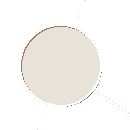
The Thrower's Page
![]() EVENTS
EVENTS
Shot
Discus
Hammer
Javelin
![]() STATS
STATS
Rankings
Age
Combos
Both hands
Other
![]() FACILITIES
FACILITIES
Layout
Sectors
Indoor
Outdoor
Insert
Racks
Overlapping
Repair
![]() INFORMATION
INFORMATION
NEW: Shoes
Paint your disc
Short wires
Physics
Pants
Training
Charting
Youth
High School
College
Wt. pentathlon
![]() OPINION
OPINION
Chip
Handle
Specs
Doping
Measuring
Basic Shot Put Preliminaries, Power Position, Delivery, and Follow-through
Preliminaries
Grip: I teach my throwers to grab the shot with both hands, fingers interlocked, with the entire inside surface of all fingers of both hands in contact with the shot. Fingers are interlocked with the sides of each finger touching the finger of the adjacent hand.
Now bend the elbows and hold the shot at shoulder height. Move the shot over the right shoulder and remove the left hand. Now the fingers are spaced perfectly. They are not too close and not too spread out.
If the fingers are too close (less than a finger width apart), you lose some control of the shot, and there is a great chance that the shot will slip off the side of your hand. On the other hand, if your fingers are too spread apart, you can only transfer most force to the shot through two fingers. You also risk spraining your middle or ring finger if your fingers are too spread.
The shot should be in contact with the upper palm at the base of the fingers (the pads just below the fingers that sometimes get callouses when doing power cleans). However, the shot should not be in the cup of the palm below these pads.
Placement: You have to hold the shot against the neck with the thumb underneath the shot. Spinners tend to hold the shot further back, under the ear, while gliders tend to hold the shot a little more toward the front, under the jawbone.
The right elbow must be out, away from the body. It never should be down, close to the torso.
Foot position: It is helpful to get a 4'x 8' piece of plywood for indoor practice. See my related page on indoor practice circle construction. It describes where to paint targets inside the circles for foot placement.
The feet should be a little wider than shoulder width, with the heels off the ground. The right foot is in the middle of the circle, and the right foot is a few inches back from the toeboard, and a few inches left of center. The entire body is facing the side.
To get the body into position, first do a side lunge over the right foot. The right foot should be "loaded" (most of the bodyweight placed on it, and bent to 75 degrees). The left leg should be only slightly bent--almost straight. Finally turn the shoulder line to the back.
To test your position, if you (hypothetically) dropped your shot from a stationary power position, it would land several inches behind your right foot.
When the shot is thrown with an approach, the thrower must transition through this power position. However, the athlete may also do a standing throw starting from the power position.
For the standing throw, lead with the hips. The hipline come around from the side to the front. Block the hips when the hips are level and square in the direction of the throw (middle of sector). Block the hips with the left leg almost straight. Right leg drive continues body momentum over the left leg.
Maximum "separtion" (rotational angular difference between the shoulder line and hip line) is maximized at about 90 degrees when hips block in direction of throw.
Now the shoulder continues as a stretch reflex to this maximal torque in the torso. The shoulders follow through and overtake the hipline.
The arm punches through as a reaction to the shoulders. When the arm is extended, the wrist and fingers follow through with the thumb pointing down and the fingers turned out to the side. See http://vm.mtsac.edu/relays/HallFame/Brenner.htm
The reverse: The body will now want to follow through. The reverse allows for maximal use of the circle real estate and the fullest extension of the body and arm over the toeboard without fouling. The reverse entails removing the left foot and placing the right foot in the same spot. When the right foot lands, it should be pointed to the left.
The side of the foot may or may not be against the toeboard. If the foot is against the toeboard, you can push your heel against the toeboard to leverage your body to keep from fouling. If the foot is back from the toeboard, you can add a quick, short hop forward to keep from fouling.
To counterbalance the arms and right shoulder over the toeboard, a straightened left leg can be raised and directed toward the rear of the circle.
Beginning (and advanced) throwers should also practice non-reverse throws, where the feet are not lifted from the power position. Beginner throwers tend to try to reverse before they complete the delivery, and this greatly shortens the acceleration path of the shot in the end of the delivery.
One final note: some gliders tend to have a slightly wider stance in the power position than spinners; however, beginners can simply assume that the power position is identical for both approach techniques.
Training index | The Thrower's Page